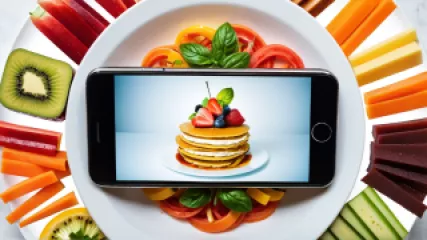The Impact of Social Media on Modern Eating Habits
It is undeniable that social media has become an integral part of our daily lives. We use it to connect with friends and family, share moments and experiences, and stay updated on the latest news and trends. However, the impact of social media extends far beyond our personal connections and leisure activities. One area where social media has had a profound effect is on our eating habits. In this opinion piece, we will explore how social media has shaped and influenced modern eating habits.
The Rise of Food Influencers
Social media platforms like Instagram and YouTube have given rise to a new breed of influencers – food influencers. These individuals have amassed large followings by sharing visually appealing and enticing images and videos of food. From mouthwatering recipes to decadent desserts, food influencers have the power to make us crave and desire the dishes they showcase.
Their influence extends beyond mere cravings. Food influencers often promote certain diets or eating patterns, whether it's veganism, paleo, or intermittent fasting. Their posts can sway our perceptions of what is considered healthy or desirable, leading us to adopt these eating patterns without fully understanding their nutritional implications.
The Quest for Instagrammable Food
In the age of social media, presentation is everything. People are increasingly seeking out aesthetically pleasing and Instagram-worthy dishes to share on their profiles. This pursuit of visually appealing food has led to the rise of "food porn" – highly stylized and meticulously crafted dishes that are designed to look stunning in photos.
Restaurants and food establishments have caught onto this trend and have started creating dishes specifically tailored for social media. These Instagrammable creations often prioritize appearance over taste or nutritional value. As a result, we find ourselves drawn to these visually striking dishes, even if they don't necessarily align with our usual eating patterns or dietary needs.
The Influence of Food Advertising
Social media is also a powerful platform for advertising, and the food industry has capitalized on this. We are bombarded with advertisements for fast food, sugary drinks, and unhealthy snacks as we scroll through our feeds. These targeted ads can subconsciously shape our cravings and preferences, leading us to make impulsive and potentially unhealthy food choices.
Moreover, social media algorithms are designed to show us content that aligns with our interests and preferences. If we frequently engage with posts about unhealthy foods, we are more likely to encounter similar content in the future. This constant exposure to tempting food images can make it difficult to resist the allure of indulgent treats.
The Illusion of Perfection
Social media presents a curated and idealized version of reality, and this extends to the portrayal of eating habits. Influencers often showcase picture-perfect meals and portray an image of effortless healthy eating. The reality, however, can be far from glamorous.
Behind the scenes, many food influencers carefully plan and stage their photos, using tricks and techniques to make their dishes appear more appealing. They may omit less visually appealing ingredients or use props to enhance the presentation. This illusion of perfection can create unrealistic expectations and put pressure on individuals to strive for unattainable eating habits.
Comparison and Self-esteem
Social media platforms are notorious for fostering comparison and negatively impacting self-esteem. When it comes to eating habits, this can manifest in several ways. Seeing others post about their nutritious meals or impressive weight loss journeys can make us feel inadequate or guilty about our own choices.
On the other hand, constant exposure to images of seemingly indulgent meals can lead to feelings of FOMO (fear of missing out) and a sense of dissatisfaction with our own eating patterns. This can perpetuate a cycle of unhealthy eating behaviors as we try to emulate what we perceive as an ideal or desirable eating pattern.
Conclusion
Social media has undoubtedly transformed the way we approach and think about food. While it offers many benefits, such as connecting us with like-minded individuals and providing inspiration for new recipes, it also has its downsides. Social media's influence on modern eating habits can be both positive and negative, depending on how we navigate and interpret the content we encounter.
As consumers, it is crucial to be aware of the potential pitfalls of social media's impact on our eating habits. We should approach the content we consume critically and consider the nutritional implications of the trends and patterns we adopt. By staying informed and making conscious choices, we can ensure that social media enhances rather than hinders our relationship with food.






